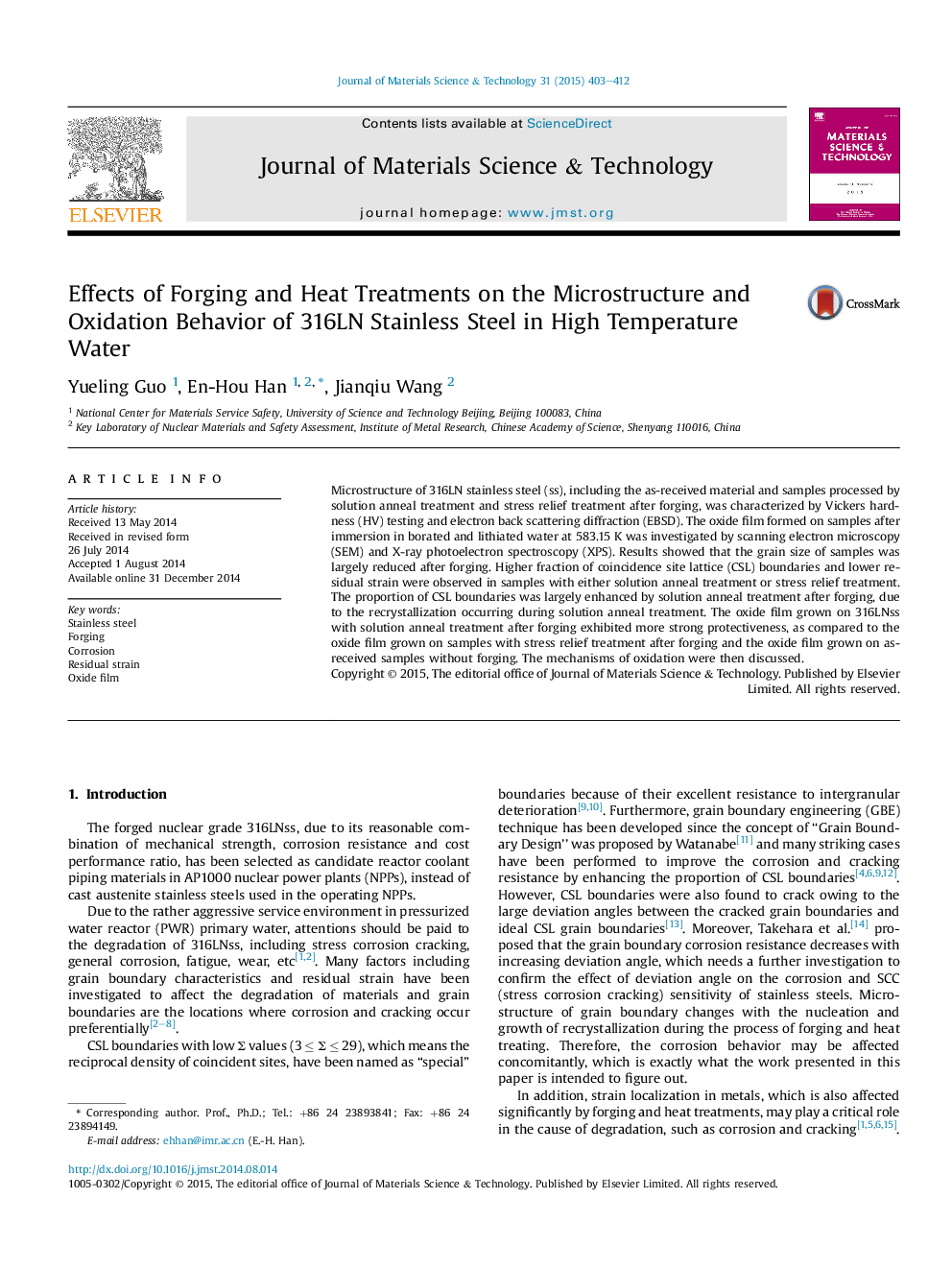| Article ID | Journal | Published Year | Pages | File Type |
|---|---|---|---|---|
| 1556216 | Journal of Materials Science & Technology | 2015 | 10 Pages |
Microstructure of 316LN stainless steel (ss), including the as-received material and samples processed by solution anneal treatment and stress relief treatment after forging, was characterized by Vickers hardness (HV) testing and electron back scattering diffraction (EBSD). The oxide film formed on samples after immersion in borated and lithiated water at 583.15 K was investigated by scanning electron microscopy (SEM) and X-ray photoelectron spectroscopy (XPS). Results showed that the grain size of samples was largely reduced after forging. Higher fraction of coincidence site lattice (CSL) boundaries and lower residual strain were observed in samples with either solution anneal treatment or stress relief treatment. The proportion of CSL boundaries was largely enhanced by solution anneal treatment after forging, due to the recrystallization occurring during solution anneal treatment. The oxide film grown on 316LNss with solution anneal treatment after forging exhibited more strong protectiveness, as compared to the oxide film grown on samples with stress relief treatment after forging and the oxide film grown on as-received samples without forging. The mechanisms of oxidation were then discussed.
